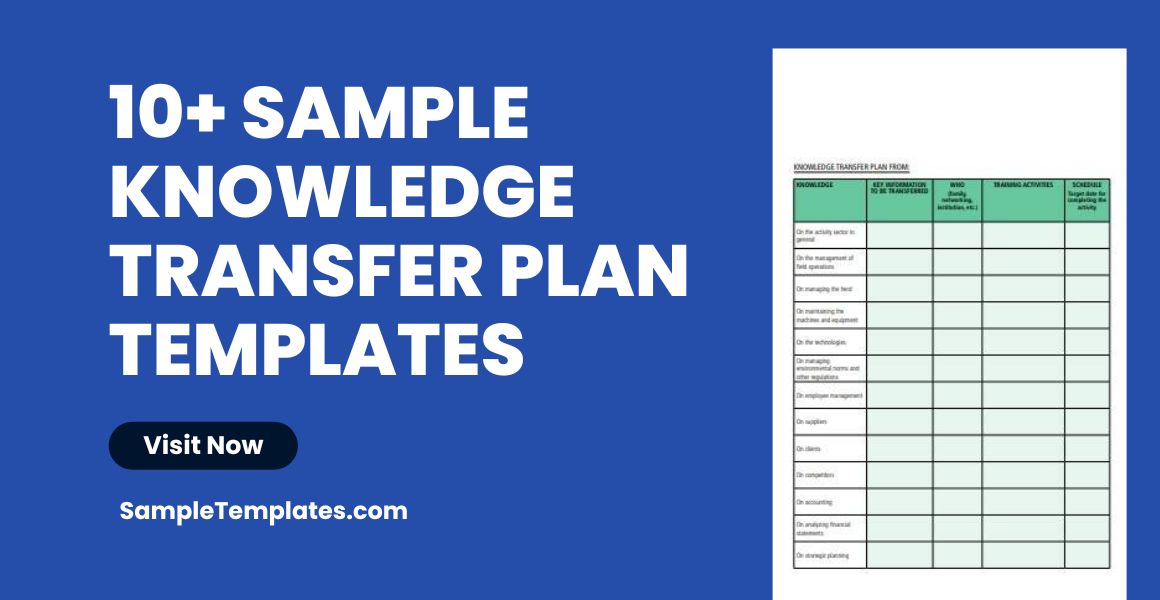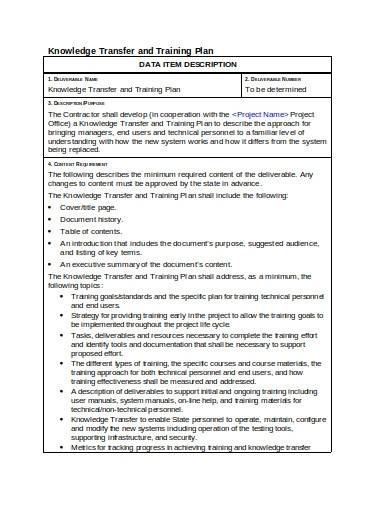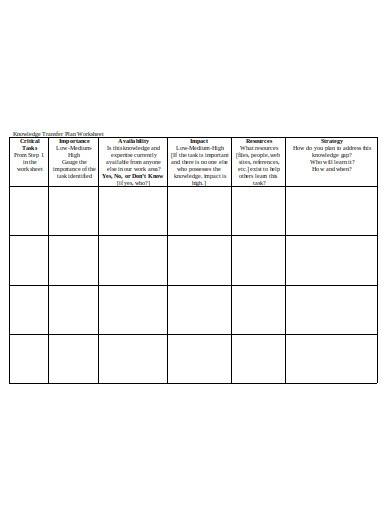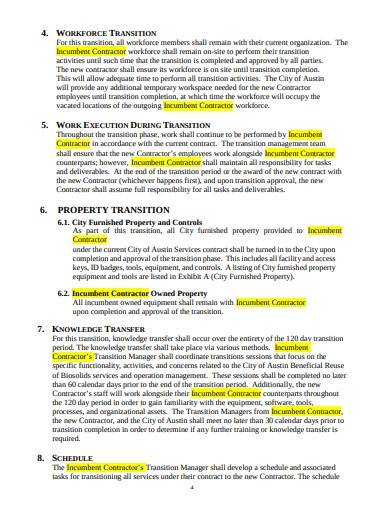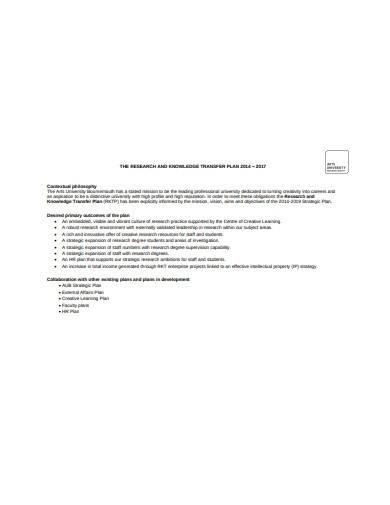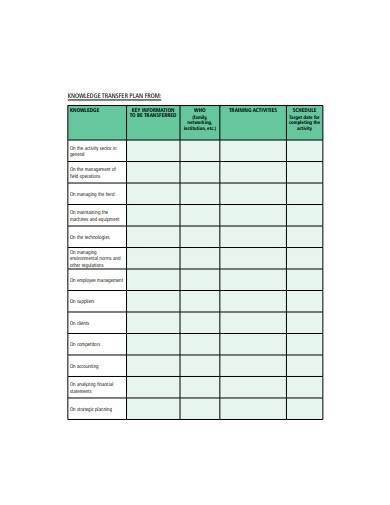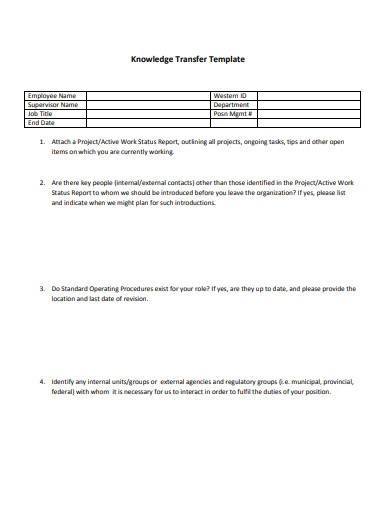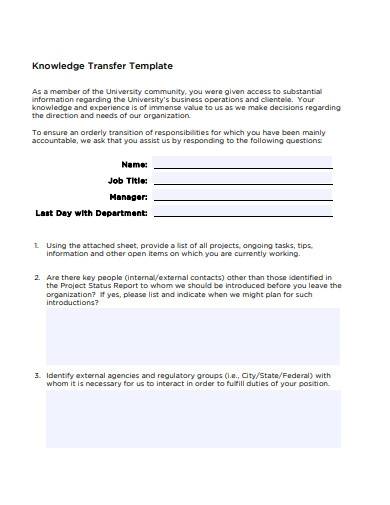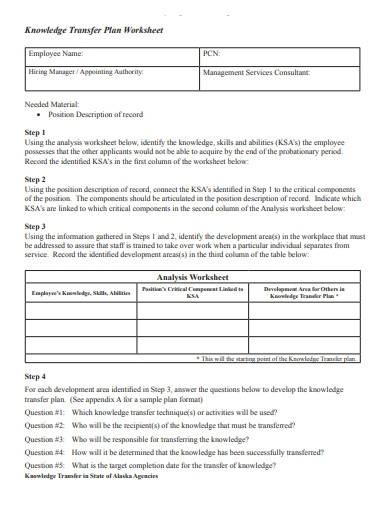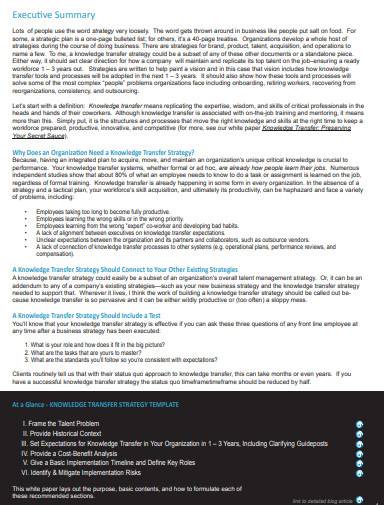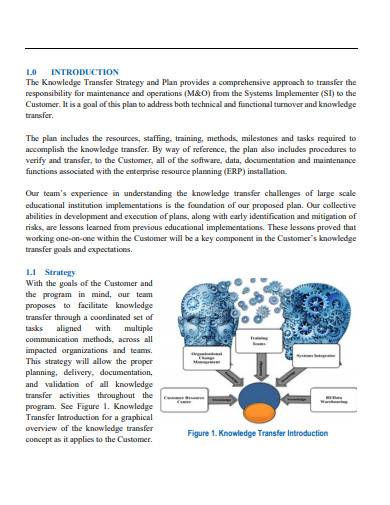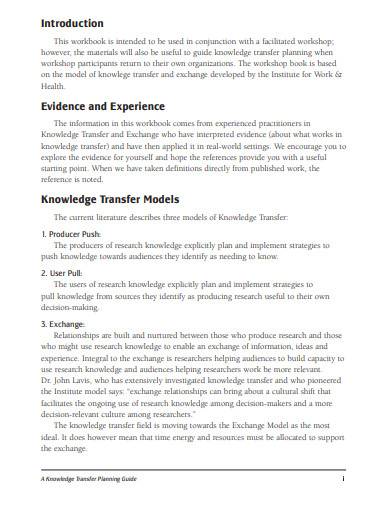There are some ways to become effective in transferring knowledge inside a company or an organization such as the use of simulation, guided experience, work shadowing, mentorship, and many more. So, to create a positive impact in your business firm or organization, you first need to become efficient in creating a knowledge transfer plan. In this article, we are glad to help you gain insight for your work by using our guide and downloadable plan samples. Keep on reading!
FREE 10+ Knowledge Transfer Plan Samples
1. Knowledge Transfer and Training Plan
2. Sample Knowledge Transfer Plan Worksheet
3. Knowledge Transfer Transition Plan
4. Research and Knowledge Transfer Plan
5. Knowledge Transfer Plan Form
6. Knowledge Transfer Template
7. Sample Knowledge Transfer Template
8. Knowledge Transfer Plan Worksheet Template
9. Knowledge Transfer Strategy Template
10. Knowledge Transfer Strategy and Plan
11. Knowledge Transfer Planning Guide
What is a Knowledge Transfer Plan?
A knowledge transfer plan is a structured plan filled with specific ideas, prioritized goals, activities, and strategies that are developed to achieve the knowledge and expertise that are necessary to be shared with the staff or team.
How to Create a Knowledge Transfer Plan
Creating an effective and strategic knowledge transfer plan for teachers, in education, or other kinds of businesses is a helpful way to prevent knowledge loss when tenured employees leave their jobs. In this section, we provide some helpful tips that you should think carefully in writing your plan:
1. Identify specific information essential for you
Before anything else, you need to identify clear and specific information which are essential or beneficial to share for your team members. What type of knowledge of your most experienced employees would you like to preserve? Think carefully about the different types of knowledge which are valuable to people in every aspect of their lives. Some examples of knowledge are strategies to respond to complex customer objections through sales, and many more.
2. Design a process for knowledge documentation
You need to consider designing an effective process for knowledge documentation or record. You may use Word or Google Docs, Excel or Google Sheets, and Powerpoint in documenting some company knowledge. Or you may use audio recording, video recording, and/or chat transcription for your company reference. Then, allow your employees to use a knowledge transfer plan by encouraging them to follow, outline, and save their information.
3. Select an effective platform
Search for technology that will assist your goals without stressing your employees. So, select an effective knowledge sharing platform that has good features in standardizing and automating saved information. It must let you determine duplicate content and has the most latest version available for your employees. Plus, it can also save and share information in various formats such as images, charts, texts, audios, and videos.
4. Encourage employees to utilize technology efficiently
Then, you can now encourage your employees to utilize the technology or online sharing platform efficiently and use its full potential. In this way, your employees can have a sort of support system in their work, making them more productive on their jobs.
FAQs
Knowledge transfer has the main purpose to organize, make, capture, or distribute knowledge and guarantee its availability for different kinds of future users.What is the main purpose of knowledge transfer?
Krathwohl (2002) explained that the four types of knowledge are factual knowledge, conceptual knowledge, procedural knowledge, and metacognitive knowledge. What are the four types of knowledge?
Skills training contains specific goals for the improvement of an individual’s ability, capacity, productivity, and performance. On the other hand, knowledge transfer is helping an individual become aware or gain information about something.What is the difference between skills training and knowledge transfer?
To effectively share knowledge at work, a team leader should initiate and prioritize it. Offer incentives and set up a space to facilitate knowledge sharing. Then, re-evaluate your skills training and recruitment methods. Establish a knowledge library or an online knowledge platform. What are effective ways to share knowledge?
The book “Software Ownership Transfer: Evolving Knowledge Transfer for the Agile World” explained that the way each person solves a certain problem is a function of their personality, the culture within the group, and policies in effect in that company or organization. Thus, when your company decides to undergo some transition, a knowledge transfer is beneficial to preserve important information for the employees to maintain their tasks effectively. To assist you with your plan, we have included several plan samples that you can use.
Related Posts
FREE 10+ Resource Tracking Samples & Templates in MS Word | PDF
FREE 4+ Clinical Case Study Samples & Templates in PDF
FREE 10+ Content Validity Samples & Templates in PDF
FREE 10+ Construct Validity Samples & Templates in MS Word | PDF
FREE 10+ Code of Human Research Ethics Samples & Templates in MS Word | PDF
FREE 10+ Biography Research Report Samples and Templates in PDF
FREE 10+ System Documentation Samples & Templates in MS Word | PDF
FREE 10+ Process Document Samples & Templates in MS Word | PDF
FREE 10+ Action Research Samples & Templates in PDF
FREE 10+ Longitudinal Research Samples & Templates in PDF | MS Word
FREE 10+ Causal Research Samples & Templates in MS Word | PDF
FREE 10+ Client Discovery Samples & Templates in MS Word | PDF
FREE 10+ Null Hypothesis Samples & Templates in MS Word | PDF
FREE 9+ Product Knowledge Samples & Templates in PDF
FREE 10+ Software Documentation Samples & Templates in MS Word | PDF
